
- 6:00am
- 6:15am
- 6:30am
- 6:45am
- 7:00am
- 7:15am
- 7:30am
- 7:45am
- 8:00am
- 8:15am
- 8:30am
- 8:45am
- 9:00am
- 9:15am
- 9:30am
- 9:45am
- 10:00am
- 10:15am
- 10:30am
- 10:45am
- 11:00am
- 11:15am
- 11:30am
- 11:45am
- 12:00pm
- 12:15pm
- 12:30pm
- 12:45pm
- 1:00pm
- 1:15pm
- 1:30pm
- 1:45pm
- 2:00pm
- 2:15pm
- 2:30pm
- 2:45pm
- 3:00pm
- 3:15pm
- 3:30pm
- 3:45pm
- 4:00pm
- 4:15pm
- 4:30pm
- 4:45pm
- 5:00pm
- 5:15pm
- 5:30pm
- 5:45pm
- 6:00pm
- 6:15pm
- 6:30pm
- 6:45pm
- 7:00pm
- 7:15pm
- 7:30pm
- 7:45pm
- 8:00pm
- 8:15pm
- 8:30pm
- 8:45pm
- 9:00pm
- 9:15pm
- 9:30pm
- 9:45pm
- 10:00pm
- 10:15pm
- 10:30pm
- 10:45pm
- 11:00pm
- 11:15pm
- 11:30pm
- 11:45pm
Eat BREAKFAST

- 6:00am
- 6:15am
- 6:30am
- 6:45am
- 7:00am
- 7:15am
- 7:30am
- 7:45am
- 8:00am
- 8:15am
- 8:30am
- 8:45am
- 9:00am
- 9:15am
- 9:30am
- 9:45am
- 10:00am
- 10:15am
- 10:30am
- 10:45am
- 11:00am
- 11:15am
- 11:30am
- 11:45am
- 12:00pm
- 12:15pm
- 12:30pm
- 12:45pm
- 1:00pm
- 1:15pm
- 1:30pm
- 1:45pm
- 2:00pm
- 2:15pm
- 2:30pm
- 2:45pm
- 3:00pm
- 3:15pm
- 3:30pm
- 3:45pm
- 4:00pm
- 4:15pm
- 4:30pm
- 4:45pm
- 5:00pm
- 5:15pm
- 5:30pm
- 5:45pm
- 6:00pm
- 6:15pm
- 6:30pm
- 6:45pm
- 7:00pm
- 7:15pm
- 7:30pm
- 7:45pm
- 8:00pm
- 8:15pm
- 8:30pm
- 8:45pm
- 9:00pm
- 9:15pm
- 9:30pm
- 9:45pm
- 10:00pm
- 10:15pm
- 10:30pm
- 10:45pm
- 11:00pm
- 11:15pm
- 11:30pm
- 11:45pm
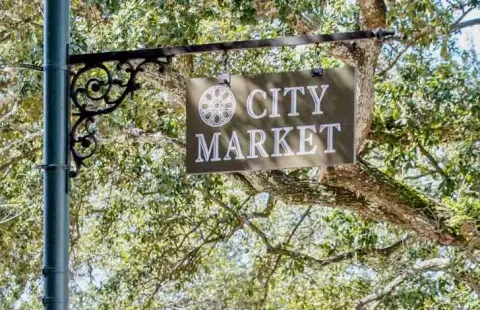
 0.5-1.5 hr stay
0.5-1.5 hr stay
Savannah City Market (Free Entry)
219 W Bryan St, savannah
City Market is a must-visit place in Savannah. This bustling market is a hub of activity and has been the center of the city's commercial life for over 200 years. The market is a unique blend of history, art, and culture that captures the essence of Savannah. Visitors can take a stroll down the cobblestone streets and explore the various shops, boutiques, and galleries that line the market. City Market is also home to some of Savannah's best restaurants, serving up Southern cuisine, seafood, and more. City Market was a hub for the city's slave trade during the Civil War. The market was also home to the city's first post office and served as a meeting place for politicians and merchants.

- 6:00am
- 6:15am
- 6:30am
- 6:45am
- 7:00am
- 7:15am
- 7:30am
- 7:45am
- 8:00am
- 8:15am
- 8:30am
- 8:45am
- 9:00am
- 9:15am
- 9:30am
- 9:45am
- 10:00am
- 10:15am
- 10:30am
- 10:45am
- 11:00am
- 11:15am
- 11:30am
- 11:45am
- 12:00pm
- 12:15pm
- 12:30pm
- 12:45pm
- 1:00pm
- 1:15pm
- 1:30pm
- 1:45pm
- 2:00pm
- 2:15pm
- 2:30pm
- 2:45pm
- 3:00pm
- 3:15pm
- 3:30pm
- 3:45pm
- 4:00pm
- 4:15pm
- 4:30pm
- 4:45pm
- 5:00pm
- 5:15pm
- 5:30pm
- 5:45pm
- 6:00pm
- 6:15pm
- 6:30pm
- 6:45pm
- 7:00pm
- 7:15pm
- 7:30pm
- 7:45pm
- 8:00pm
- 8:15pm
- 8:30pm
- 8:45pm
- 9:00pm
- 9:15pm
- 9:30pm
- 9:45pm
- 10:00pm
- 10:15pm
- 10:30pm
- 10:45pm
- 11:00pm
- 11:15pm
- 11:30pm
- 11:45pm
Eat LUNCH

- 6:00am
- 6:15am
- 6:30am
- 6:45am
- 7:00am
- 7:15am
- 7:30am
- 7:45am
- 8:00am
- 8:15am
- 8:30am
- 8:45am
- 9:00am
- 9:15am
- 9:30am
- 9:45am
- 10:00am
- 10:15am
- 10:30am
- 10:45am
- 11:00am
- 11:15am
- 11:30am
- 11:45am
- 12:00pm
- 12:15pm
- 12:30pm
- 12:45pm
- 1:00pm
- 1:15pm
- 1:30pm
- 1:45pm
- 2:00pm
- 2:15pm
- 2:30pm
- 2:45pm
- 3:00pm
- 3:15pm
- 3:30pm
- 3:45pm
- 4:00pm
- 4:15pm
- 4:30pm
- 4:45pm
- 5:00pm
- 5:15pm
- 5:30pm
- 5:45pm
- 6:00pm
- 6:15pm
- 6:30pm
- 6:45pm
- 7:00pm
- 7:15pm
- 7:30pm
- 7:45pm
- 8:00pm
- 8:15pm
- 8:30pm
- 8:45pm
- 9:00pm
- 9:15pm
- 9:30pm
- 9:45pm
- 10:00pm
- 10:15pm
- 10:30pm
- 10:45pm
- 11:00pm
- 11:15pm
- 11:30pm
- 11:45pm
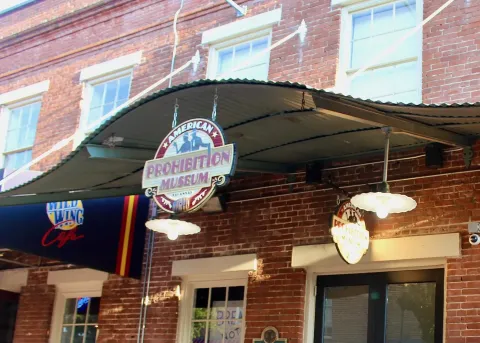
 0.75-1.5 hr stay
0.75-1.5 hr stay
American Prohibition Museum ($$)
209 W Saint Julian Street, savannah
The American Prohibition Museum is a one-of-a-kind attraction that offers a unique perspective on an important period in American history. The museum is housed in a historic building that dates back to the late 19th century, and its exhibits feature fascinating artifacts, vintage vehicles, and other memorabilia from the Prohibition era. American Prohibition Museum is the first and only museum in the United States dedicated solely to the history of Prohibition. Visitors can learn about the various causes and consequences of this era, including its impact on crime, politics, and society as a whole.
- 0.1 MILES
- 2 minutes
- Get Directions

- 6:00am
- 6:15am
- 6:30am
- 6:45am
- 7:00am
- 7:15am
- 7:30am
- 7:45am
- 8:00am
- 8:15am
- 8:30am
- 8:45am
- 9:00am
- 9:15am
- 9:30am
- 9:45am
- 10:00am
- 10:15am
- 10:30am
- 10:45am
- 11:00am
- 11:15am
- 11:30am
- 11:45am
- 12:00pm
- 12:15pm
- 12:30pm
- 12:45pm
- 1:00pm
- 1:15pm
- 1:30pm
- 1:45pm
- 2:00pm
- 2:15pm
- 2:30pm
- 2:45pm
- 3:00pm
- 3:15pm
- 3:30pm
- 3:45pm
- 4:00pm
- 4:15pm
- 4:30pm
- 4:45pm
- 5:00pm
- 5:15pm
- 5:30pm
- 5:45pm
- 6:00pm
- 6:15pm
- 6:30pm
- 6:45pm
- 7:00pm
- 7:15pm
- 7:30pm
- 7:45pm
- 8:00pm
- 8:15pm
- 8:30pm
- 8:45pm
- 9:00pm
- 9:15pm
- 9:30pm
- 9:45pm
- 10:00pm
- 10:15pm
- 10:30pm
- 10:45pm
- 11:00pm
- 11:15pm
- 11:30pm
- 11:45pm
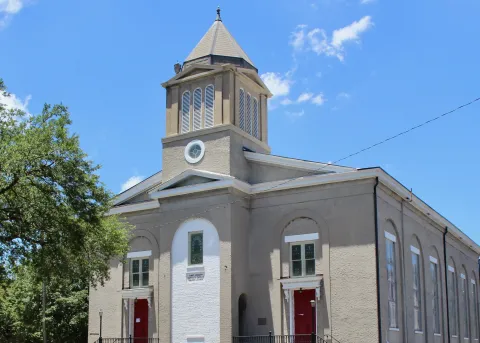
 0.5-1.0 hr stay
0.5-1.0 hr stay
First African Baptist Church (Free Entry)
23 Montgomery St, savannah
First African Baptist Church is a historic place of worship that dates back to the late 1700s. It was the first black Baptist church in North America and has played a pivotal role in African American history. The church was a stop on the Underground Railroad, and many slaves sought refuge here on their journey to freedom. Visitors to the church can learn about its rich history and view artifacts from its past, including a slave balcony and a pulpit used by famous civil rights leaders like Martin Luther King Jr.
- 0.1 MILES
- 2 minutes
- Get Directions

- 6:00am
- 6:15am
- 6:30am
- 6:45am
- 7:00am
- 7:15am
- 7:30am
- 7:45am
- 8:00am
- 8:15am
- 8:30am
- 8:45am
- 9:00am
- 9:15am
- 9:30am
- 9:45am
- 10:00am
- 10:15am
- 10:30am
- 10:45am
- 11:00am
- 11:15am
- 11:30am
- 11:45am
- 12:00pm
- 12:15pm
- 12:30pm
- 12:45pm
- 1:00pm
- 1:15pm
- 1:30pm
- 1:45pm
- 2:00pm
- 2:15pm
- 2:30pm
- 2:45pm
- 3:00pm
- 3:15pm
- 3:30pm
- 3:45pm
- 4:00pm
- 4:15pm
- 4:30pm
- 4:45pm
- 5:00pm
- 5:15pm
- 5:30pm
- 5:45pm
- 6:00pm
- 6:15pm
- 6:30pm
- 6:45pm
- 7:00pm
- 7:15pm
- 7:30pm
- 7:45pm
- 8:00pm
- 8:15pm
- 8:30pm
- 8:45pm
- 9:00pm
- 9:15pm
- 9:30pm
- 9:45pm
- 10:00pm
- 10:15pm
- 10:30pm
- 10:45pm
- 11:00pm
- 11:15pm
- 11:30pm
- 11:45pm
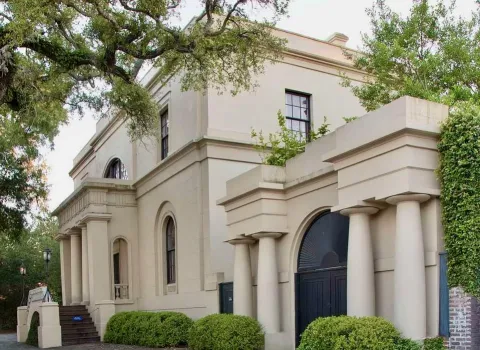
 1.0-2.0 hr stay
1.0-2.0 hr stay
Ships of The Sea Maritime Museum ($)
41 Martin Luther King Jr Blvd, savannah
The Ships of the Sea Maritime Museum is a historical museum dedicated to preserving and showcasing the rich maritime history of Savannah. This museum is housed in the Scarborough House, a beautiful 19th-century Greek Revival mansion that is itself a marvel to behold. It is the largest private collection of shipping vessels in North America.

- 6:00am
- 6:15am
- 6:30am
- 6:45am
- 7:00am
- 7:15am
- 7:30am
- 7:45am
- 8:00am
- 8:15am
- 8:30am
- 8:45am
- 9:00am
- 9:15am
- 9:30am
- 9:45am
- 10:00am
- 10:15am
- 10:30am
- 10:45am
- 11:00am
- 11:15am
- 11:30am
- 11:45am
- 12:00pm
- 12:15pm
- 12:30pm
- 12:45pm
- 1:00pm
- 1:15pm
- 1:30pm
- 1:45pm
- 2:00pm
- 2:15pm
- 2:30pm
- 2:45pm
- 3:00pm
- 3:15pm
- 3:30pm
- 3:45pm
- 4:00pm
- 4:15pm
- 4:30pm
- 4:45pm
- 5:00pm
- 5:15pm
- 5:30pm
- 5:45pm
- 6:00pm
- 6:15pm
- 6:30pm
- 6:45pm
- 7:00pm
- 7:15pm
- 7:30pm
- 7:45pm
- 8:00pm
- 8:15pm
- 8:30pm
- 8:45pm
- 9:00pm
- 9:15pm
- 9:30pm
- 9:45pm
- 10:00pm
- 10:15pm
- 10:30pm
- 10:45pm
- 11:00pm
- 11:15pm
- 11:30pm
- 11:45pm
Eat DINNER

- 6:00am
- 6:15am
- 6:30am
- 6:45am
- 7:00am
- 7:15am
- 7:30am
- 7:45am
- 8:00am
- 8:15am
- 8:30am
- 8:45am
- 9:00am
- 9:15am
- 9:30am
- 9:45am
- 10:00am
- 10:15am
- 10:30am
- 10:45am
- 11:00am
- 11:15am
- 11:30am
- 11:45am
- 12:00pm
- 12:15pm
- 12:30pm
- 12:45pm
- 1:00pm
- 1:15pm
- 1:30pm
- 1:45pm
- 2:00pm
- 2:15pm
- 2:30pm
- 2:45pm
- 3:00pm
- 3:15pm
- 3:30pm
- 3:45pm
- 4:00pm
- 4:15pm
- 4:30pm
- 4:45pm
- 5:00pm
- 5:15pm
- 5:30pm
- 5:45pm
- 6:00pm
- 6:15pm
- 6:30pm
- 6:45pm
- 7:00pm
- 7:15pm
- 7:30pm
- 7:45pm
- 8:00pm
- 8:15pm
- 8:30pm
- 8:45pm
- 9:00pm
- 9:15pm
- 9:30pm
- 9:45pm
- 10:00pm
- 10:15pm
- 10:30pm
- 10:45pm
- 11:00pm
- 11:15pm
- 11:30pm
- 11:45pm
Eat BREAKFAST

- 6:00am
- 6:15am
- 6:30am
- 6:45am
- 7:00am
- 7:15am
- 7:30am
- 7:45am
- 8:00am
- 8:15am
- 8:30am
- 8:45am
- 9:00am
- 9:15am
- 9:30am
- 9:45am
- 10:00am
- 10:15am
- 10:30am
- 10:45am
- 11:00am
- 11:15am
- 11:30am
- 11:45am
- 12:00pm
- 12:15pm
- 12:30pm
- 12:45pm
- 1:00pm
- 1:15pm
- 1:30pm
- 1:45pm
- 2:00pm
- 2:15pm
- 2:30pm
- 2:45pm
- 3:00pm
- 3:15pm
- 3:30pm
- 3:45pm
- 4:00pm
- 4:15pm
- 4:30pm
- 4:45pm
- 5:00pm
- 5:15pm
- 5:30pm
- 5:45pm
- 6:00pm
- 6:15pm
- 6:30pm
- 6:45pm
- 7:00pm
- 7:15pm
- 7:30pm
- 7:45pm
- 8:00pm
- 8:15pm
- 8:30pm
- 8:45pm
- 9:00pm
- 9:15pm
- 9:30pm
- 9:45pm
- 10:00pm
- 10:15pm
- 10:30pm
- 10:45pm
- 11:00pm
- 11:15pm
- 11:30pm
- 11:45pm
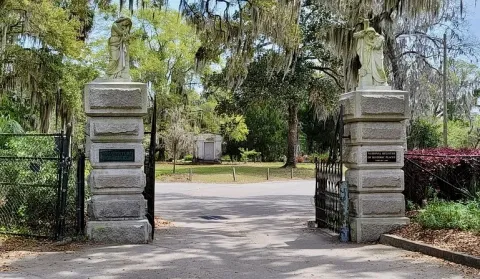
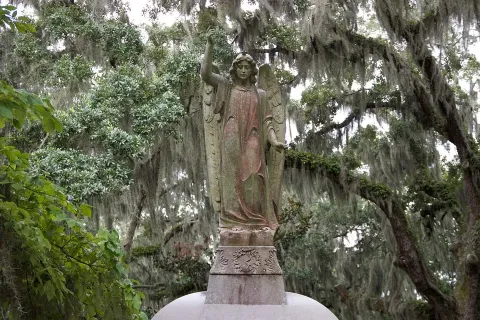
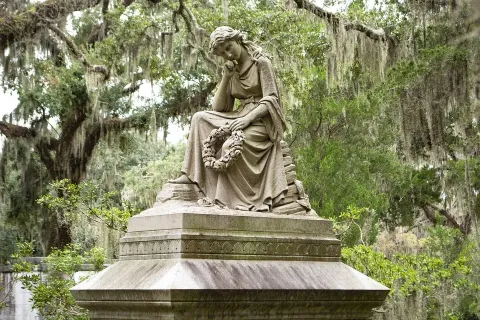
 1.0-2.5 hr stay
1.0-2.5 hr stay
Bonaventure Cemetery (Free Entry)
330 Bonaventure Rd, thunderbolt
Bonaventure Cemetery is a historical cemetery that covers over 160 acres of land. It was established in 1846 and has become a popular tourist attraction in Savannah. The cemetery is known for its intricate statues, headstones, and monuments. It's also famous for being the final resting place of many notable figures, including poet Conrad Aiken, lyricist Johnny Mercer, and Georgia's first governor Edward Telfair. Bonaventure Cemetery has also received several awards and recognitions, including being named one of the 10 most beautiful cemeteries in the world.

- 6:00am
- 6:15am
- 6:30am
- 6:45am
- 7:00am
- 7:15am
- 7:30am
- 7:45am
- 8:00am
- 8:15am
- 8:30am
- 8:45am
- 9:00am
- 9:15am
- 9:30am
- 9:45am
- 10:00am
- 10:15am
- 10:30am
- 10:45am
- 11:00am
- 11:15am
- 11:30am
- 11:45am
- 12:00pm
- 12:15pm
- 12:30pm
- 12:45pm
- 1:00pm
- 1:15pm
- 1:30pm
- 1:45pm
- 2:00pm
- 2:15pm
- 2:30pm
- 2:45pm
- 3:00pm
- 3:15pm
- 3:30pm
- 3:45pm
- 4:00pm
- 4:15pm
- 4:30pm
- 4:45pm
- 5:00pm
- 5:15pm
- 5:30pm
- 5:45pm
- 6:00pm
- 6:15pm
- 6:30pm
- 6:45pm
- 7:00pm
- 7:15pm
- 7:30pm
- 7:45pm
- 8:00pm
- 8:15pm
- 8:30pm
- 8:45pm
- 9:00pm
- 9:15pm
- 9:30pm
- 9:45pm
- 10:00pm
- 10:15pm
- 10:30pm
- 10:45pm
- 11:00pm
- 11:15pm
- 11:30pm
- 11:45pm
Eat LUNCH

- 6:00am
- 6:15am
- 6:30am
- 6:45am
- 7:00am
- 7:15am
- 7:30am
- 7:45am
- 8:00am
- 8:15am
- 8:30am
- 8:45am
- 9:00am
- 9:15am
- 9:30am
- 9:45am
- 10:00am
- 10:15am
- 10:30am
- 10:45am
- 11:00am
- 11:15am
- 11:30am
- 11:45am
- 12:00pm
- 12:15pm
- 12:30pm
- 12:45pm
- 1:00pm
- 1:15pm
- 1:30pm
- 1:45pm
- 2:00pm
- 2:15pm
- 2:30pm
- 2:45pm
- 3:00pm
- 3:15pm
- 3:30pm
- 3:45pm
- 4:00pm
- 4:15pm
- 4:30pm
- 4:45pm
- 5:00pm
- 5:15pm
- 5:30pm
- 5:45pm
- 6:00pm
- 6:15pm
- 6:30pm
- 6:45pm
- 7:00pm
- 7:15pm
- 7:30pm
- 7:45pm
- 8:00pm
- 8:15pm
- 8:30pm
- 8:45pm
- 9:00pm
- 9:15pm
- 9:30pm
- 9:45pm
- 10:00pm
- 10:15pm
- 10:30pm
- 10:45pm
- 11:00pm
- 11:15pm
- 11:30pm
- 11:45pm
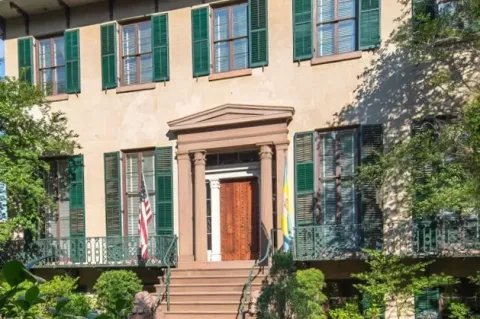
 0.75-1.5 hr stay
0.75-1.5 hr stay
Andrew Low House ($)
329 Abercorn St, savannah
The Andrew Low House is a historic home that has been converted into a museum showcasing the rich history of the Low family and the city of Savannah. The house was built in 1848 and was owned by Andrew Low, a wealthy cotton merchant. The house is an excellent example of the Greek Revival architecture of the mid-19th century. Visitors can learn about the life of the Low family, including Andrew Low's daughter Juliette Gordon Low, who founded the Girl Scouts of the USA. The museum also features a collection of period furniture, artwork, and decorative objects.The Andrew Low House has received numerous awards and recognitions, including being named a National Historic Landmark in 1973.
- 0.1 MILES
- 2 minutes
- Get Directions

- 6:00am
- 6:15am
- 6:30am
- 6:45am
- 7:00am
- 7:15am
- 7:30am
- 7:45am
- 8:00am
- 8:15am
- 8:30am
- 8:45am
- 9:00am
- 9:15am
- 9:30am
- 9:45am
- 10:00am
- 10:15am
- 10:30am
- 10:45am
- 11:00am
- 11:15am
- 11:30am
- 11:45am
- 12:00pm
- 12:15pm
- 12:30pm
- 12:45pm
- 1:00pm
- 1:15pm
- 1:30pm
- 1:45pm
- 2:00pm
- 2:15pm
- 2:30pm
- 2:45pm
- 3:00pm
- 3:15pm
- 3:30pm
- 3:45pm
- 4:00pm
- 4:15pm
- 4:30pm
- 4:45pm
- 5:00pm
- 5:15pm
- 5:30pm
- 5:45pm
- 6:00pm
- 6:15pm
- 6:30pm
- 6:45pm
- 7:00pm
- 7:15pm
- 7:30pm
- 7:45pm
- 8:00pm
- 8:15pm
- 8:30pm
- 8:45pm
- 9:00pm
- 9:15pm
- 9:30pm
- 9:45pm
- 10:00pm
- 10:15pm
- 10:30pm
- 10:45pm
- 11:00pm
- 11:15pm
- 11:30pm
- 11:45pm
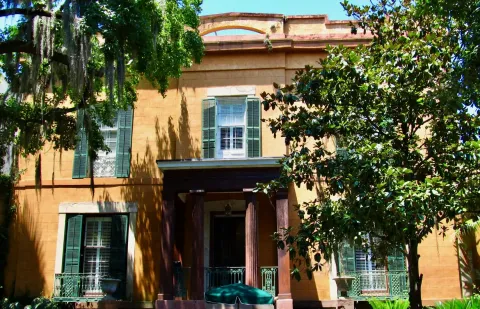
 1.0-1.5 hr stay
1.0-1.5 hr stay
Sorrel-weed House ($)
6 W Harris St, savannah
The Sorrel-Weed House is a historic house museum that dates back to the 1840s. It was built for Francis Sorrel, a wealthy shipping merchant, and his wife Matilda, and has been meticulously restored to its former glory. The house is known for its unique architecture, featuring both Greek Revival and Gothic elements. This house was used as a filming location for the movie "Forrest Gump." The iconic scene where Forrest sits on a bench waiting for a bus was filmed right outside the house.

- 6:00am
- 6:15am
- 6:30am
- 6:45am
- 7:00am
- 7:15am
- 7:30am
- 7:45am
- 8:00am
- 8:15am
- 8:30am
- 8:45am
- 9:00am
- 9:15am
- 9:30am
- 9:45am
- 10:00am
- 10:15am
- 10:30am
- 10:45am
- 11:00am
- 11:15am
- 11:30am
- 11:45am
- 12:00pm
- 12:15pm
- 12:30pm
- 12:45pm
- 1:00pm
- 1:15pm
- 1:30pm
- 1:45pm
- 2:00pm
- 2:15pm
- 2:30pm
- 2:45pm
- 3:00pm
- 3:15pm
- 3:30pm
- 3:45pm
- 4:00pm
- 4:15pm
- 4:30pm
- 4:45pm
- 5:00pm
- 5:15pm
- 5:30pm
- 5:45pm
- 6:00pm
- 6:15pm
- 6:30pm
- 6:45pm
- 7:00pm
- 7:15pm
- 7:30pm
- 7:45pm
- 8:00pm
- 8:15pm
- 8:30pm
- 8:45pm
- 9:00pm
- 9:15pm
- 9:30pm
- 9:45pm
- 10:00pm
- 10:15pm
- 10:30pm
- 10:45pm
- 11:00pm
- 11:15pm
- 11:30pm
- 11:45pm
Eat DINNER

- 6:00am
- 6:15am
- 6:30am
- 6:45am
- 7:00am
- 7:15am
- 7:30am
- 7:45am
- 8:00am
- 8:15am
- 8:30am
- 8:45am
- 9:00am
- 9:15am
- 9:30am
- 9:45am
- 10:00am
- 10:15am
- 10:30am
- 10:45am
- 11:00am
- 11:15am
- 11:30am
- 11:45am
- 12:00pm
- 12:15pm
- 12:30pm
- 12:45pm
- 1:00pm
- 1:15pm
- 1:30pm
- 1:45pm
- 2:00pm
- 2:15pm
- 2:30pm
- 2:45pm
- 3:00pm
- 3:15pm
- 3:30pm
- 3:45pm
- 4:00pm
- 4:15pm
- 4:30pm
- 4:45pm
- 5:00pm
- 5:15pm
- 5:30pm
- 5:45pm
- 6:00pm
- 6:15pm
- 6:30pm
- 6:45pm
- 7:00pm
- 7:15pm
- 7:30pm
- 7:45pm
- 8:00pm
- 8:15pm
- 8:30pm
- 8:45pm
- 9:00pm
- 9:15pm
- 9:30pm
- 9:45pm
- 10:00pm
- 10:15pm
- 10:30pm
- 10:45pm
- 11:00pm
- 11:15pm
- 11:30pm
- 11:45pm
Eat BREAKFAST

- 6:00am
- 6:15am
- 6:30am
- 6:45am
- 7:00am
- 7:15am
- 7:30am
- 7:45am
- 8:00am
- 8:15am
- 8:30am
- 8:45am
- 9:00am
- 9:15am
- 9:30am
- 9:45am
- 10:00am
- 10:15am
- 10:30am
- 10:45am
- 11:00am
- 11:15am
- 11:30am
- 11:45am
- 12:00pm
- 12:15pm
- 12:30pm
- 12:45pm
- 1:00pm
- 1:15pm
- 1:30pm
- 1:45pm
- 2:00pm
- 2:15pm
- 2:30pm
- 2:45pm
- 3:00pm
- 3:15pm
- 3:30pm
- 3:45pm
- 4:00pm
- 4:15pm
- 4:30pm
- 4:45pm
- 5:00pm
- 5:15pm
- 5:30pm
- 5:45pm
- 6:00pm
- 6:15pm
- 6:30pm
- 6:45pm
- 7:00pm
- 7:15pm
- 7:30pm
- 7:45pm
- 8:00pm
- 8:15pm
- 8:30pm
- 8:45pm
- 9:00pm
- 9:15pm
- 9:30pm
- 9:45pm
- 10:00pm
- 10:15pm
- 10:30pm
- 10:45pm
- 11:00pm
- 11:15pm
- 11:30pm
- 11:45pm
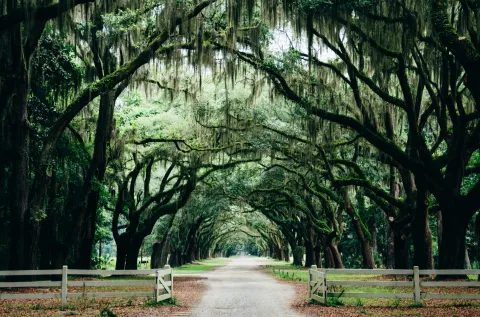
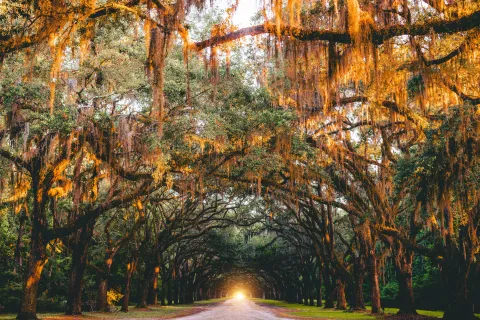
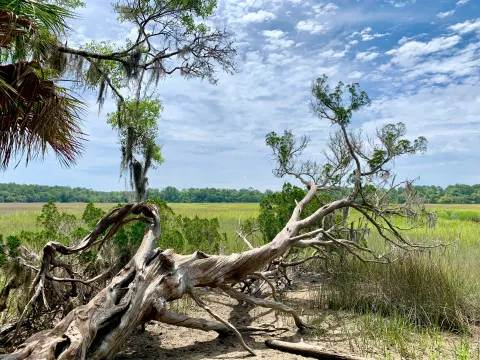
 1.5-3.0 hr stay
1.5-3.0 hr stay
Wormsloe Historic Site ($)
7601 Skidaway Rd, savannah
Wormsloe Historic Site is a historic plantation founded in the 1730s by Noble Jones, one of Georgia's colonial founders. The site is spread over 822 acres and features a beautiful oak-lined drive, ruins of Jones' tabby house, a museum, and a nature trail. Visitors can explore the plantation's history, from the early colonial period to the Civil War era. Wormsloe Historic Site has received several awards and recognition for its preservation efforts and historical significance, including being listed on the National Register of Historic Places. Wormsloe Historic Site is the oldest standing structure in Savannah, the 18th-century ruins of the Jones' family home. Visitors can learn about the site's significance in the American Revolution and explore the museum, which houses a collection of artifacts and exhibits related to the colonial period.

- 6:00am
- 6:15am
- 6:30am
- 6:45am
- 7:00am
- 7:15am
- 7:30am
- 7:45am
- 8:00am
- 8:15am
- 8:30am
- 8:45am
- 9:00am
- 9:15am
- 9:30am
- 9:45am
- 10:00am
- 10:15am
- 10:30am
- 10:45am
- 11:00am
- 11:15am
- 11:30am
- 11:45am
- 12:00pm
- 12:15pm
- 12:30pm
- 12:45pm
- 1:00pm
- 1:15pm
- 1:30pm
- 1:45pm
- 2:00pm
- 2:15pm
- 2:30pm
- 2:45pm
- 3:00pm
- 3:15pm
- 3:30pm
- 3:45pm
- 4:00pm
- 4:15pm
- 4:30pm
- 4:45pm
- 5:00pm
- 5:15pm
- 5:30pm
- 5:45pm
- 6:00pm
- 6:15pm
- 6:30pm
- 6:45pm
- 7:00pm
- 7:15pm
- 7:30pm
- 7:45pm
- 8:00pm
- 8:15pm
- 8:30pm
- 8:45pm
- 9:00pm
- 9:15pm
- 9:30pm
- 9:45pm
- 10:00pm
- 10:15pm
- 10:30pm
- 10:45pm
- 11:00pm
- 11:15pm
- 11:30pm
- 11:45pm
Eat LUNCH

- 6:00am
- 6:15am
- 6:30am
- 6:45am
- 7:00am
- 7:15am
- 7:30am
- 7:45am
- 8:00am
- 8:15am
- 8:30am
- 8:45am
- 9:00am
- 9:15am
- 9:30am
- 9:45am
- 10:00am
- 10:15am
- 10:30am
- 10:45am
- 11:00am
- 11:15am
- 11:30am
- 11:45am
- 12:00pm
- 12:15pm
- 12:30pm
- 12:45pm
- 1:00pm
- 1:15pm
- 1:30pm
- 1:45pm
- 2:00pm
- 2:15pm
- 2:30pm
- 2:45pm
- 3:00pm
- 3:15pm
- 3:30pm
- 3:45pm
- 4:00pm
- 4:15pm
- 4:30pm
- 4:45pm
- 5:00pm
- 5:15pm
- 5:30pm
- 5:45pm
- 6:00pm
- 6:15pm
- 6:30pm
- 6:45pm
- 7:00pm
- 7:15pm
- 7:30pm
- 7:45pm
- 8:00pm
- 8:15pm
- 8:30pm
- 8:45pm
- 9:00pm
- 9:15pm
- 9:30pm
- 9:45pm
- 10:00pm
- 10:15pm
- 10:30pm
- 10:45pm
- 11:00pm
- 11:15pm
- 11:30pm
- 11:45pm
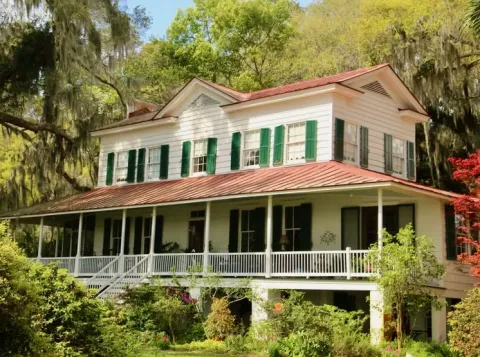
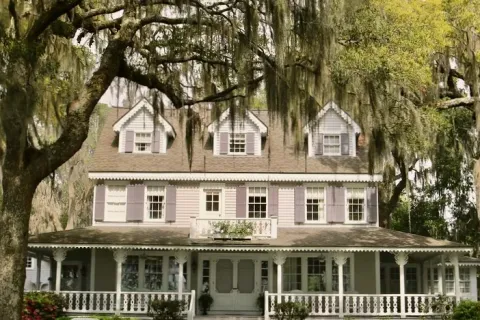
 0.5-1.0 hr stay
0.5-1.0 hr stay
Bluff Drive (Free Entry)
La Roche Ave & W Bluff Dr, savannah
Bluff Drive is a scenic drive that takes visitors through some of the most beautiful neighborhoods in Savannah. The area is home to several historic homes, including the famous Wormsloe Historic Site. The drive offers breathtaking views of the Skidaway River, and visitors can take a leisurely stroll along the riverfront. Bluff Drive was once home to some of Savannah's wealthiest families, who built their grand homes along the riverfront.
- 6.6 MILES
- 158 minutes
- Get Directions

- 6:00am
- 6:15am
- 6:30am
- 6:45am
- 7:00am
- 7:15am
- 7:30am
- 7:45am
- 8:00am
- 8:15am
- 8:30am
- 8:45am
- 9:00am
- 9:15am
- 9:30am
- 9:45am
- 10:00am
- 10:15am
- 10:30am
- 10:45am
- 11:00am
- 11:15am
- 11:30am
- 11:45am
- 12:00pm
- 12:15pm
- 12:30pm
- 12:45pm
- 1:00pm
- 1:15pm
- 1:30pm
- 1:45pm
- 2:00pm
- 2:15pm
- 2:30pm
- 2:45pm
- 3:00pm
- 3:15pm
- 3:30pm
- 3:45pm
- 4:00pm
- 4:15pm
- 4:30pm
- 4:45pm
- 5:00pm
- 5:15pm
- 5:30pm
- 5:45pm
- 6:00pm
- 6:15pm
- 6:30pm
- 6:45pm
- 7:00pm
- 7:15pm
- 7:30pm
- 7:45pm
- 8:00pm
- 8:15pm
- 8:30pm
- 8:45pm
- 9:00pm
- 9:15pm
- 9:30pm
- 9:45pm
- 10:00pm
- 10:15pm
- 10:30pm
- 10:45pm
- 11:00pm
- 11:15pm
- 11:30pm
- 11:45pm
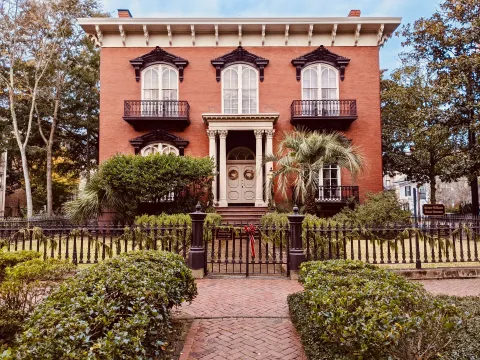
 1.0-1.5 hr stay
1.0-1.5 hr stay
Mercer Williams House Museum ($$)
429 Bull St, savannah
The Mercer Williams House Museum is a historic home turned museum that showcases the life and times of the Mercer and Williams families who lived there. The house is famous for its connection to the bestselling book and movie, "Midnight in the Garden of Good and Evil." The house was built for General Hugh W. Mercer, great-grandfather of the famous lyricist Johnny Mercer. Guests will learn about the history of the house and the families that lived there.The Mercer Williams House Museum has received multiple awards for its preservation efforts and is listed on the National Register of Historic Places.

- 6:00am
- 6:15am
- 6:30am
- 6:45am
- 7:00am
- 7:15am
- 7:30am
- 7:45am
- 8:00am
- 8:15am
- 8:30am
- 8:45am
- 9:00am
- 9:15am
- 9:30am
- 9:45am
- 10:00am
- 10:15am
- 10:30am
- 10:45am
- 11:00am
- 11:15am
- 11:30am
- 11:45am
- 12:00pm
- 12:15pm
- 12:30pm
- 12:45pm
- 1:00pm
- 1:15pm
- 1:30pm
- 1:45pm
- 2:00pm
- 2:15pm
- 2:30pm
- 2:45pm
- 3:00pm
- 3:15pm
- 3:30pm
- 3:45pm
- 4:00pm
- 4:15pm
- 4:30pm
- 4:45pm
- 5:00pm
- 5:15pm
- 5:30pm
- 5:45pm
- 6:00pm
- 6:15pm
- 6:30pm
- 6:45pm
- 7:00pm
- 7:15pm
- 7:30pm
- 7:45pm
- 8:00pm
- 8:15pm
- 8:30pm
- 8:45pm
- 9:00pm
- 9:15pm
- 9:30pm
- 9:45pm
- 10:00pm
- 10:15pm
- 10:30pm
- 10:45pm
- 11:00pm
- 11:15pm
- 11:30pm
- 11:45pm
Eat DINNER

- 6:00am
- 6:15am
- 6:30am
- 6:45am
- 7:00am
- 7:15am
- 7:30am
- 7:45am
- 8:00am
- 8:15am
- 8:30am
- 8:45am
- 9:00am
- 9:15am
- 9:30am
- 9:45am
- 10:00am
- 10:15am
- 10:30am
- 10:45am
- 11:00am
- 11:15am
- 11:30am
- 11:45am
- 12:00pm
- 12:15pm
- 12:30pm
- 12:45pm
- 1:00pm
- 1:15pm
- 1:30pm
- 1:45pm
- 2:00pm
- 2:15pm
- 2:30pm
- 2:45pm
- 3:00pm
- 3:15pm
- 3:30pm
- 3:45pm
- 4:00pm
- 4:15pm
- 4:30pm
- 4:45pm
- 5:00pm
- 5:15pm
- 5:30pm
- 5:45pm
- 6:00pm
- 6:15pm
- 6:30pm
- 6:45pm
- 7:00pm
- 7:15pm
- 7:30pm
- 7:45pm
- 8:00pm
- 8:15pm
- 8:30pm
- 8:45pm
- 9:00pm
- 9:15pm
- 9:30pm
- 9:45pm
- 10:00pm
- 10:15pm
- 10:30pm
- 10:45pm
- 11:00pm
- 11:15pm
- 11:30pm
- 11:45pm
Eat BREAKFAST

- 6:00am
- 6:15am
- 6:30am
- 6:45am
- 7:00am
- 7:15am
- 7:30am
- 7:45am
- 8:00am
- 8:15am
- 8:30am
- 8:45am
- 9:00am
- 9:15am
- 9:30am
- 9:45am
- 10:00am
- 10:15am
- 10:30am
- 10:45am
- 11:00am
- 11:15am
- 11:30am
- 11:45am
- 12:00pm
- 12:15pm
- 12:30pm
- 12:45pm
- 1:00pm
- 1:15pm
- 1:30pm
- 1:45pm
- 2:00pm
- 2:15pm
- 2:30pm
- 2:45pm
- 3:00pm
- 3:15pm
- 3:30pm
- 3:45pm
- 4:00pm
- 4:15pm
- 4:30pm
- 4:45pm
- 5:00pm
- 5:15pm
- 5:30pm
- 5:45pm
- 6:00pm
- 6:15pm
- 6:30pm
- 6:45pm
- 7:00pm
- 7:15pm
- 7:30pm
- 7:45pm
- 8:00pm
- 8:15pm
- 8:30pm
- 8:45pm
- 9:00pm
- 9:15pm
- 9:30pm
- 9:45pm
- 10:00pm
- 10:15pm
- 10:30pm
- 10:45pm
- 11:00pm
- 11:15pm
- 11:30pm
- 11:45pm
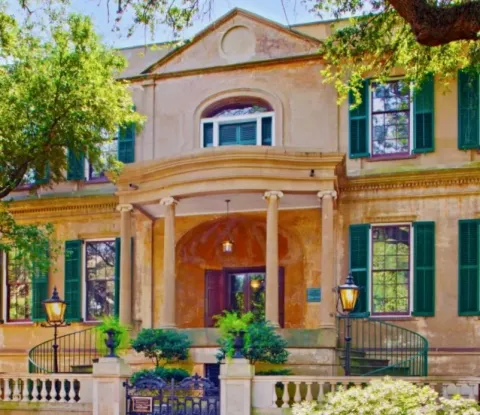
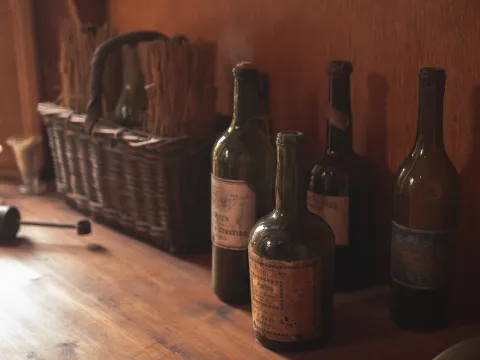
 1.0-2.0 hr stay
1.0-2.0 hr stay
Owens-thomas House & Slave Quarters ($$)
124 Abercorn St, savannah
The Owens-Thomas House & Slave Quarters is a museum that offers visitors an immersive experience into the complex and often dark history of Savannah, GA. The house was built in 1819 and features unique architectural features like a cantilevered staircase and original furnishings. The museum's main attraction is the Slave Quarters, which offers visitors a rare glimpse into the lives of the enslaved individuals who worked and lived on the property. Visitors can learn about the daily struggles and hardships that enslaved people faced, and how they contributed to the wealth and prosperity of the city of Savannah. The Owens-Thomas House was originally designed by British architect William Jay, who was responsible for many other iconic buildings in Savannah.

- 6:00am
- 6:15am
- 6:30am
- 6:45am
- 7:00am
- 7:15am
- 7:30am
- 7:45am
- 8:00am
- 8:15am
- 8:30am
- 8:45am
- 9:00am
- 9:15am
- 9:30am
- 9:45am
- 10:00am
- 10:15am
- 10:30am
- 10:45am
- 11:00am
- 11:15am
- 11:30am
- 11:45am
- 12:00pm
- 12:15pm
- 12:30pm
- 12:45pm
- 1:00pm
- 1:15pm
- 1:30pm
- 1:45pm
- 2:00pm
- 2:15pm
- 2:30pm
- 2:45pm
- 3:00pm
- 3:15pm
- 3:30pm
- 3:45pm
- 4:00pm
- 4:15pm
- 4:30pm
- 4:45pm
- 5:00pm
- 5:15pm
- 5:30pm
- 5:45pm
- 6:00pm
- 6:15pm
- 6:30pm
- 6:45pm
- 7:00pm
- 7:15pm
- 7:30pm
- 7:45pm
- 8:00pm
- 8:15pm
- 8:30pm
- 8:45pm
- 9:00pm
- 9:15pm
- 9:30pm
- 9:45pm
- 10:00pm
- 10:15pm
- 10:30pm
- 10:45pm
- 11:00pm
- 11:15pm
- 11:30pm
- 11:45pm
Eat LUNCH

- 6:00am
- 6:15am
- 6:30am
- 6:45am
- 7:00am
- 7:15am
- 7:30am
- 7:45am
- 8:00am
- 8:15am
- 8:30am
- 8:45am
- 9:00am
- 9:15am
- 9:30am
- 9:45am
- 10:00am
- 10:15am
- 10:30am
- 10:45am
- 11:00am
- 11:15am
- 11:30am
- 11:45am
- 12:00pm
- 12:15pm
- 12:30pm
- 12:45pm
- 1:00pm
- 1:15pm
- 1:30pm
- 1:45pm
- 2:00pm
- 2:15pm
- 2:30pm
- 2:45pm
- 3:00pm
- 3:15pm
- 3:30pm
- 3:45pm
- 4:00pm
- 4:15pm
- 4:30pm
- 4:45pm
- 5:00pm
- 5:15pm
- 5:30pm
- 5:45pm
- 6:00pm
- 6:15pm
- 6:30pm
- 6:45pm
- 7:00pm
- 7:15pm
- 7:30pm
- 7:45pm
- 8:00pm
- 8:15pm
- 8:30pm
- 8:45pm
- 9:00pm
- 9:15pm
- 9:30pm
- 9:45pm
- 10:00pm
- 10:15pm
- 10:30pm
- 10:45pm
- 11:00pm
- 11:15pm
- 11:30pm
- 11:45pm
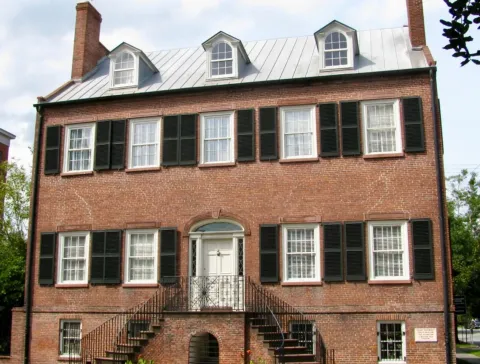
 1.0-1.5 hr stay
1.0-1.5 hr stay
Davenport House Museum ($)
323 E Broughton St, savannah
The Davenport House Museum is a must-visit attraction for anyone interested in history and architecture. This Federal-style house is beautifully preserved and furnished with original pieces from the early 19th century. Visitors can take guided tours of the house, which include the parlor, dining room, bedrooms, and kitchen. It was almost demolished in the 1950s to make way for a parking lot. However, a group of concerned citizens led by the Historic Savannah Foundation rallied to save the house and turn it into a museum.
- 0.2 MILES
- 5 minutes
- Get Directions

- 6:00am
- 6:15am
- 6:30am
- 6:45am
- 7:00am
- 7:15am
- 7:30am
- 7:45am
- 8:00am
- 8:15am
- 8:30am
- 8:45am
- 9:00am
- 9:15am
- 9:30am
- 9:45am
- 10:00am
- 10:15am
- 10:30am
- 10:45am
- 11:00am
- 11:15am
- 11:30am
- 11:45am
- 12:00pm
- 12:15pm
- 12:30pm
- 12:45pm
- 1:00pm
- 1:15pm
- 1:30pm
- 1:45pm
- 2:00pm
- 2:15pm
- 2:30pm
- 2:45pm
- 3:00pm
- 3:15pm
- 3:30pm
- 3:45pm
- 4:00pm
- 4:15pm
- 4:30pm
- 4:45pm
- 5:00pm
- 5:15pm
- 5:30pm
- 5:45pm
- 6:00pm
- 6:15pm
- 6:30pm
- 6:45pm
- 7:00pm
- 7:15pm
- 7:30pm
- 7:45pm
- 8:00pm
- 8:15pm
- 8:30pm
- 8:45pm
- 9:00pm
- 9:15pm
- 9:30pm
- 9:45pm
- 10:00pm
- 10:15pm
- 10:30pm
- 10:45pm
- 11:00pm
- 11:15pm
- 11:30pm
- 11:45pm
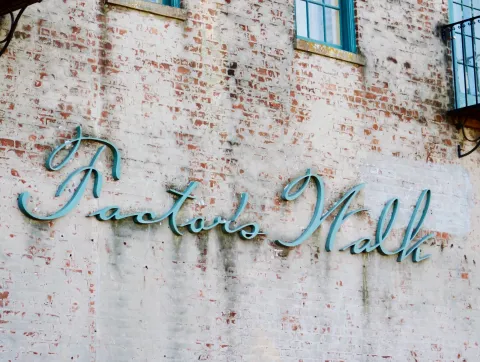
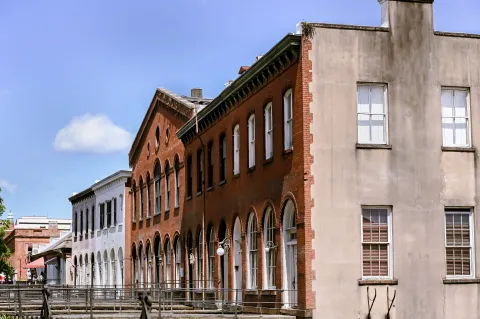
 0.75-1.5 hr stay
0.75-1.5 hr stay
Factors Walk (Free Entry)
Factors Walk, savannah
Factors Walk is a historical pedestrian walkway that connects the Savannah River waterfront to Bay Street. The place was once a hub for cotton merchants, and the restored warehouses now house art galleries, boutiques, and restaurants. One interesting fact about this place is that the buildings along the walkway were originally designed with ramps instead of stairs to move cotton bales from the river to the warehouses.
- 0.3 MILES
- 7 minutes
- Get Directions

- 6:00am
- 6:15am
- 6:30am
- 6:45am
- 7:00am
- 7:15am
- 7:30am
- 7:45am
- 8:00am
- 8:15am
- 8:30am
- 8:45am
- 9:00am
- 9:15am
- 9:30am
- 9:45am
- 10:00am
- 10:15am
- 10:30am
- 10:45am
- 11:00am
- 11:15am
- 11:30am
- 11:45am
- 12:00pm
- 12:15pm
- 12:30pm
- 12:45pm
- 1:00pm
- 1:15pm
- 1:30pm
- 1:45pm
- 2:00pm
- 2:15pm
- 2:30pm
- 2:45pm
- 3:00pm
- 3:15pm
- 3:30pm
- 3:45pm
- 4:00pm
- 4:15pm
- 4:30pm
- 4:45pm
- 5:00pm
- 5:15pm
- 5:30pm
- 5:45pm
- 6:00pm
- 6:15pm
- 6:30pm
- 6:45pm
- 7:00pm
- 7:15pm
- 7:30pm
- 7:45pm
- 8:00pm
- 8:15pm
- 8:30pm
- 8:45pm
- 9:00pm
- 9:15pm
- 9:30pm
- 9:45pm
- 10:00pm
- 10:15pm
- 10:30pm
- 10:45pm
- 11:00pm
- 11:15pm
- 11:30pm
- 11:45pm
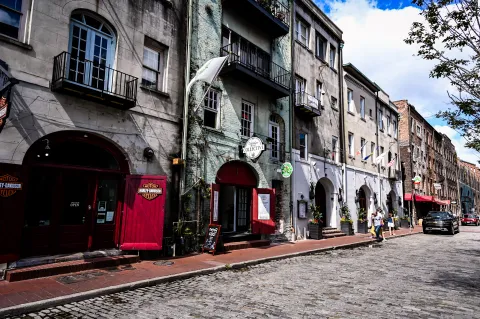
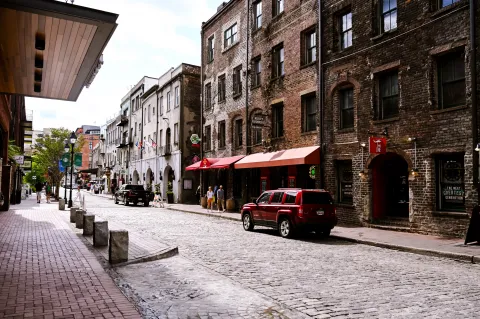
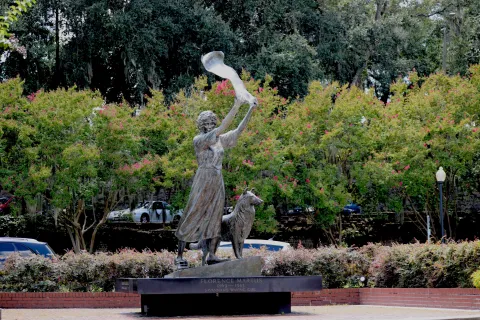
 1.0-2.5 hr stay
1.0-2.5 hr stay
River Street - Savannah Waterfront (Free Entry)
River St, savannah
River Street is a historic waterfront street in Savannah, Georgia, known for its cobblestone streets, picturesque views of the Savannah River, and vibrant atmosphere. It's a bustling destination that attracts locals and tourists alike, offering visitors an authentic Savannah experience. River Street was once a bustling port that served as a gateway to Savannah for goods and travelers from around the world. Today, it's a lively entertainment district that celebrates the city's rich history and culture.

- 6:00am
- 6:15am
- 6:30am
- 6:45am
- 7:00am
- 7:15am
- 7:30am
- 7:45am
- 8:00am
- 8:15am
- 8:30am
- 8:45am
- 9:00am
- 9:15am
- 9:30am
- 9:45am
- 10:00am
- 10:15am
- 10:30am
- 10:45am
- 11:00am
- 11:15am
- 11:30am
- 11:45am
- 12:00pm
- 12:15pm
- 12:30pm
- 12:45pm
- 1:00pm
- 1:15pm
- 1:30pm
- 1:45pm
- 2:00pm
- 2:15pm
- 2:30pm
- 2:45pm
- 3:00pm
- 3:15pm
- 3:30pm
- 3:45pm
- 4:00pm
- 4:15pm
- 4:30pm
- 4:45pm
- 5:00pm
- 5:15pm
- 5:30pm
- 5:45pm
- 6:00pm
- 6:15pm
- 6:30pm
- 6:45pm
- 7:00pm
- 7:15pm
- 7:30pm
- 7:45pm
- 8:00pm
- 8:15pm
- 8:30pm
- 8:45pm
- 9:00pm
- 9:15pm
- 9:30pm
- 9:45pm
- 10:00pm
- 10:15pm
- 10:30pm
- 10:45pm
- 11:00pm
- 11:15pm
- 11:30pm
- 11:45pm
Eat DINNER

- 6:00am
- 6:15am
- 6:30am
- 6:45am
- 7:00am
- 7:15am
- 7:30am
- 7:45am
- 8:00am
- 8:15am
- 8:30am
- 8:45am
- 9:00am
- 9:15am
- 9:30am
- 9:45am
- 10:00am
- 10:15am
- 10:30am
- 10:45am
- 11:00am
- 11:15am
- 11:30am
- 11:45am
- 12:00pm
- 12:15pm
- 12:30pm
- 12:45pm
- 1:00pm
- 1:15pm
- 1:30pm
- 1:45pm
- 2:00pm
- 2:15pm
- 2:30pm
- 2:45pm
- 3:00pm
- 3:15pm
- 3:30pm
- 3:45pm
- 4:00pm
- 4:15pm
- 4:30pm
- 4:45pm
- 5:00pm
- 5:15pm
- 5:30pm
- 5:45pm
- 6:00pm
- 6:15pm
- 6:30pm
- 6:45pm
- 7:00pm
- 7:15pm
- 7:30pm
- 7:45pm
- 8:00pm
- 8:15pm
- 8:30pm
- 8:45pm
- 9:00pm
- 9:15pm
- 9:30pm
- 9:45pm
- 10:00pm
- 10:15pm
- 10:30pm
- 10:45pm
- 11:00pm
- 11:15pm
- 11:30pm
- 11:45pm
Eat BREAKFAST

- 6:00am
- 6:15am
- 6:30am
- 6:45am
- 7:00am
- 7:15am
- 7:30am
- 7:45am
- 8:00am
- 8:15am
- 8:30am
- 8:45am
- 9:00am
- 9:15am
- 9:30am
- 9:45am
- 10:00am
- 10:15am
- 10:30am
- 10:45am
- 11:00am
- 11:15am
- 11:30am
- 11:45am
- 12:00pm
- 12:15pm
- 12:30pm
- 12:45pm
- 1:00pm
- 1:15pm
- 1:30pm
- 1:45pm
- 2:00pm
- 2:15pm
- 2:30pm
- 2:45pm
- 3:00pm
- 3:15pm
- 3:30pm
- 3:45pm
- 4:00pm
- 4:15pm
- 4:30pm
- 4:45pm
- 5:00pm
- 5:15pm
- 5:30pm
- 5:45pm
- 6:00pm
- 6:15pm
- 6:30pm
- 6:45pm
- 7:00pm
- 7:15pm
- 7:30pm
- 7:45pm
- 8:00pm
- 8:15pm
- 8:30pm
- 8:45pm
- 9:00pm
- 9:15pm
- 9:30pm
- 9:45pm
- 10:00pm
- 10:15pm
- 10:30pm
- 10:45pm
- 11:00pm
- 11:15pm
- 11:30pm
- 11:45pm
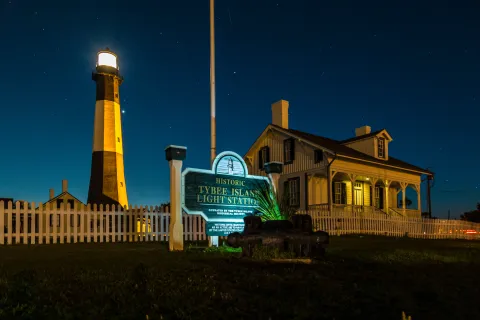
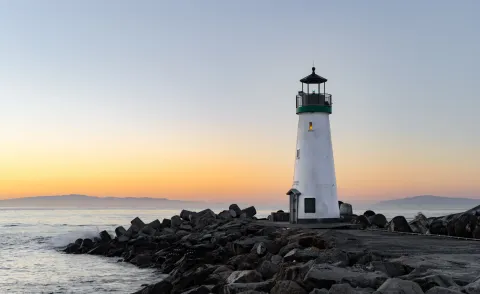
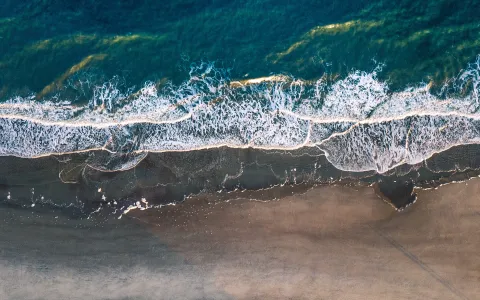
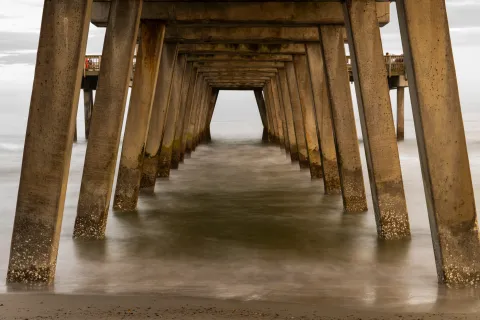
 1.5-3.5 hr stay
1.5-3.5 hr stay
Tybee Island (Free Entry)
30 Meddin Dr, tybee island
Tybee Island is a stunning beach destination located just 20 minutes from downtown Savannah. It is a barrier island surrounded by the Atlantic Ocean and the Savannah River. The island offers visitors a unique blend of natural beauty and historical landmarks. Tybee Island was originally known as "Savannah Beach" and was a popular spot for the wealthy Savannah residents to visit in the 1800s.

- 6:00am
- 6:15am
- 6:30am
- 6:45am
- 7:00am
- 7:15am
- 7:30am
- 7:45am
- 8:00am
- 8:15am
- 8:30am
- 8:45am
- 9:00am
- 9:15am
- 9:30am
- 9:45am
- 10:00am
- 10:15am
- 10:30am
- 10:45am
- 11:00am
- 11:15am
- 11:30am
- 11:45am
- 12:00pm
- 12:15pm
- 12:30pm
- 12:45pm
- 1:00pm
- 1:15pm
- 1:30pm
- 1:45pm
- 2:00pm
- 2:15pm
- 2:30pm
- 2:45pm
- 3:00pm
- 3:15pm
- 3:30pm
- 3:45pm
- 4:00pm
- 4:15pm
- 4:30pm
- 4:45pm
- 5:00pm
- 5:15pm
- 5:30pm
- 5:45pm
- 6:00pm
- 6:15pm
- 6:30pm
- 6:45pm
- 7:00pm
- 7:15pm
- 7:30pm
- 7:45pm
- 8:00pm
- 8:15pm
- 8:30pm
- 8:45pm
- 9:00pm
- 9:15pm
- 9:30pm
- 9:45pm
- 10:00pm
- 10:15pm
- 10:30pm
- 10:45pm
- 11:00pm
- 11:15pm
- 11:30pm
- 11:45pm
Eat LUNCH

- 6:00am
- 6:15am
- 6:30am
- 6:45am
- 7:00am
- 7:15am
- 7:30am
- 7:45am
- 8:00am
- 8:15am
- 8:30am
- 8:45am
- 9:00am
- 9:15am
- 9:30am
- 9:45am
- 10:00am
- 10:15am
- 10:30am
- 10:45am
- 11:00am
- 11:15am
- 11:30am
- 11:45am
- 12:00pm
- 12:15pm
- 12:30pm
- 12:45pm
- 1:00pm
- 1:15pm
- 1:30pm
- 1:45pm
- 2:00pm
- 2:15pm
- 2:30pm
- 2:45pm
- 3:00pm
- 3:15pm
- 3:30pm
- 3:45pm
- 4:00pm
- 4:15pm
- 4:30pm
- 4:45pm
- 5:00pm
- 5:15pm
- 5:30pm
- 5:45pm
- 6:00pm
- 6:15pm
- 6:30pm
- 6:45pm
- 7:00pm
- 7:15pm
- 7:30pm
- 7:45pm
- 8:00pm
- 8:15pm
- 8:30pm
- 8:45pm
- 9:00pm
- 9:15pm
- 9:30pm
- 9:45pm
- 10:00pm
- 10:15pm
- 10:30pm
- 10:45pm
- 11:00pm
- 11:15pm
- 11:30pm
- 11:45pm
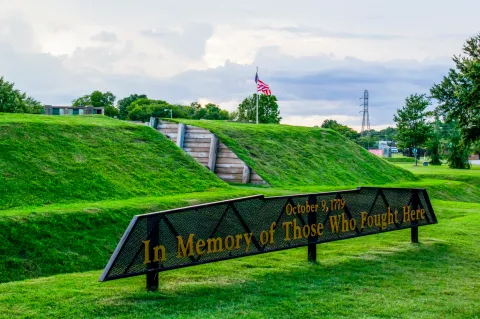
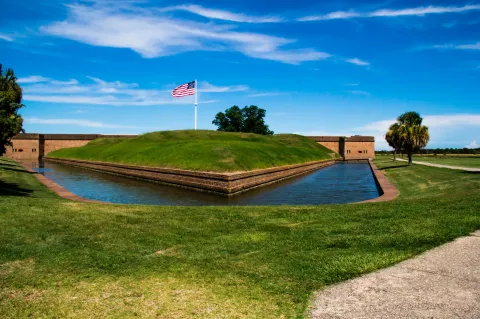
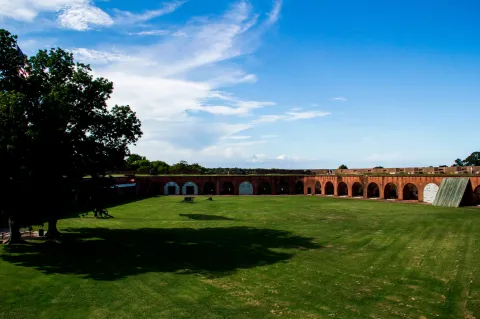
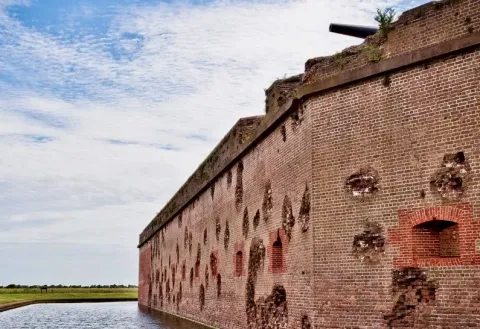
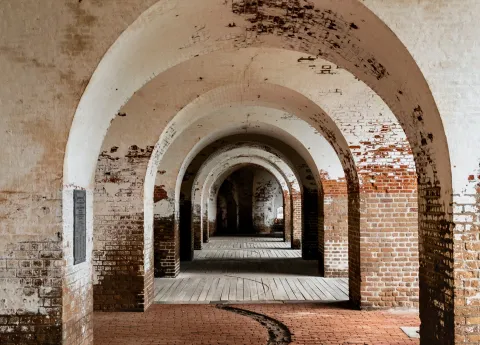
 1.0-2.0 hr stay
1.0-2.0 hr stay
Fort Pulaski National Monument ($)
101 Fort Pulaski Rd, savannah
Fort Pulaski National Monument is a historic site located on Cockspur Island, just east of Savannah, GA. It is a preserved Civil War-era fort that was built to protect Savannah from invading forces. The fort was completed in 1847 and was named after General Casimir Pulaski, a Polish immigrant who fought in the Revolutionary War. Fort Pulaski National Monument include the moat surrounding the fort and the drawbridge that leads into it. Visitors can also see the damage caused by the Union forces during the Civil War, which is still visible in some parts of the fort. The fort has two floors with rooms for sleeping quarters, storage, and ammunition. Visitors can take a self-guided tour through the fort and explore the gun rooms, powder magazines, and other areas.
- 12.3 MILES
- 295 minutes
- Get Directions

- 6:00am
- 6:15am
- 6:30am
- 6:45am
- 7:00am
- 7:15am
- 7:30am
- 7:45am
- 8:00am
- 8:15am
- 8:30am
- 8:45am
- 9:00am
- 9:15am
- 9:30am
- 9:45am
- 10:00am
- 10:15am
- 10:30am
- 10:45am
- 11:00am
- 11:15am
- 11:30am
- 11:45am
- 12:00pm
- 12:15pm
- 12:30pm
- 12:45pm
- 1:00pm
- 1:15pm
- 1:30pm
- 1:45pm
- 2:00pm
- 2:15pm
- 2:30pm
- 2:45pm
- 3:00pm
- 3:15pm
- 3:30pm
- 3:45pm
- 4:00pm
- 4:15pm
- 4:30pm
- 4:45pm
- 5:00pm
- 5:15pm
- 5:30pm
- 5:45pm
- 6:00pm
- 6:15pm
- 6:30pm
- 6:45pm
- 7:00pm
- 7:15pm
- 7:30pm
- 7:45pm
- 8:00pm
- 8:15pm
- 8:30pm
- 8:45pm
- 9:00pm
- 9:15pm
- 9:30pm
- 9:45pm
- 10:00pm
- 10:15pm
- 10:30pm
- 10:45pm
- 11:00pm
- 11:15pm
- 11:30pm
- 11:45pm
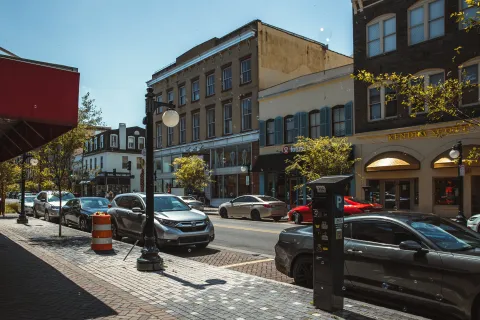
 1.0-2.0 hr stay
1.0-2.0 hr stay
Broughton Street (Free Entry)
E Broughton St & Bull St, savannah
Broughton Street is a historic and charming street in the heart of Savannah's downtown district. This pedestrian-friendly street is home to a variety of shops, boutiques, restaurants, and cafes. The street is also lined with beautiful historic buildings that showcase the city's rich architecture. Broughton Street was once the main shopping district in Savannah during the 19th and early 20th centuries. Today, it continues to be a popular destination for shopping and dining.

- 6:00am
- 6:15am
- 6:30am
- 6:45am
- 7:00am
- 7:15am
- 7:30am
- 7:45am
- 8:00am
- 8:15am
- 8:30am
- 8:45am
- 9:00am
- 9:15am
- 9:30am
- 9:45am
- 10:00am
- 10:15am
- 10:30am
- 10:45am
- 11:00am
- 11:15am
- 11:30am
- 11:45am
- 12:00pm
- 12:15pm
- 12:30pm
- 12:45pm
- 1:00pm
- 1:15pm
- 1:30pm
- 1:45pm
- 2:00pm
- 2:15pm
- 2:30pm
- 2:45pm
- 3:00pm
- 3:15pm
- 3:30pm
- 3:45pm
- 4:00pm
- 4:15pm
- 4:30pm
- 4:45pm
- 5:00pm
- 5:15pm
- 5:30pm
- 5:45pm
- 6:00pm
- 6:15pm
- 6:30pm
- 6:45pm
- 7:00pm
- 7:15pm
- 7:30pm
- 7:45pm
- 8:00pm
- 8:15pm
- 8:30pm
- 8:45pm
- 9:00pm
- 9:15pm
- 9:30pm
- 9:45pm
- 10:00pm
- 10:15pm
- 10:30pm
- 10:45pm
- 11:00pm
- 11:15pm
- 11:30pm
- 11:45pm
Eat DINNER

- 6:00am
- 6:15am
- 6:30am
- 6:45am
- 7:00am
- 7:15am
- 7:30am
- 7:45am
- 8:00am
- 8:15am
- 8:30am
- 8:45am
- 9:00am
- 9:15am
- 9:30am
- 9:45am
- 10:00am
- 10:15am
- 10:30am
- 10:45am
- 11:00am
- 11:15am
- 11:30am
- 11:45am
- 12:00pm
- 12:15pm
- 12:30pm
- 12:45pm
- 1:00pm
- 1:15pm
- 1:30pm
- 1:45pm
- 2:00pm
- 2:15pm
- 2:30pm
- 2:45pm
- 3:00pm
- 3:15pm
- 3:30pm
- 3:45pm
- 4:00pm
- 4:15pm
- 4:30pm
- 4:45pm
- 5:00pm
- 5:15pm
- 5:30pm
- 5:45pm
- 6:00pm
- 6:15pm
- 6:30pm
- 6:45pm
- 7:00pm
- 7:15pm
- 7:30pm
- 7:45pm
- 8:00pm
- 8:15pm
- 8:30pm
- 8:45pm
- 9:00pm
- 9:15pm
- 9:30pm
- 9:45pm
- 10:00pm
- 10:15pm
- 10:30pm
- 10:45pm
- 11:00pm
- 11:15pm
- 11:30pm
- 11:45pm
Eat BREAKFAST

- 6:00am
- 6:15am
- 6:30am
- 6:45am
- 7:00am
- 7:15am
- 7:30am
- 7:45am
- 8:00am
- 8:15am
- 8:30am
- 8:45am
- 9:00am
- 9:15am
- 9:30am
- 9:45am
- 10:00am
- 10:15am
- 10:30am
- 10:45am
- 11:00am
- 11:15am
- 11:30am
- 11:45am
- 12:00pm
- 12:15pm
- 12:30pm
- 12:45pm
- 1:00pm
- 1:15pm
- 1:30pm
- 1:45pm
- 2:00pm
- 2:15pm
- 2:30pm
- 2:45pm
- 3:00pm
- 3:15pm
- 3:30pm
- 3:45pm
- 4:00pm
- 4:15pm
- 4:30pm
- 4:45pm
- 5:00pm
- 5:15pm
- 5:30pm
- 5:45pm
- 6:00pm
- 6:15pm
- 6:30pm
- 6:45pm
- 7:00pm
- 7:15pm
- 7:30pm
- 7:45pm
- 8:00pm
- 8:15pm
- 8:30pm
- 8:45pm
- 9:00pm
- 9:15pm
- 9:30pm
- 9:45pm
- 10:00pm
- 10:15pm
- 10:30pm
- 10:45pm
- 11:00pm
- 11:15pm
- 11:30pm
- 11:45pm
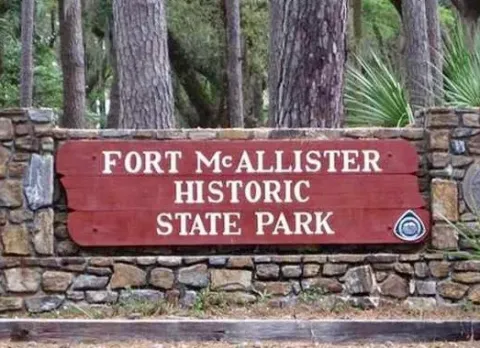


 1.5-3.0 hr stay
1.5-3.0 hr stay
Fort Mcallister Historic Park ($)
3894 Fort McAllister Rd, richmond hill
Fort McAllister Historic Park is a state park that was established in 1979. It is a beautiful 1,725-acre park that is home to the best-preserved earthwork fortification of the Confederacy. The fort was built in 1861 and was a significant stronghold during the Civil War. It was also the site of the last Confederate ironclad to fall to Union forces. Fort McAllister Historic Park has been recognized as one of the top state parks in the country.

- 6:00am
- 6:15am
- 6:30am
- 6:45am
- 7:00am
- 7:15am
- 7:30am
- 7:45am
- 8:00am
- 8:15am
- 8:30am
- 8:45am
- 9:00am
- 9:15am
- 9:30am
- 9:45am
- 10:00am
- 10:15am
- 10:30am
- 10:45am
- 11:00am
- 11:15am
- 11:30am
- 11:45am
- 12:00pm
- 12:15pm
- 12:30pm
- 12:45pm
- 1:00pm
- 1:15pm
- 1:30pm
- 1:45pm
- 2:00pm
- 2:15pm
- 2:30pm
- 2:45pm
- 3:00pm
- 3:15pm
- 3:30pm
- 3:45pm
- 4:00pm
- 4:15pm
- 4:30pm
- 4:45pm
- 5:00pm
- 5:15pm
- 5:30pm
- 5:45pm
- 6:00pm
- 6:15pm
- 6:30pm
- 6:45pm
- 7:00pm
- 7:15pm
- 7:30pm
- 7:45pm
- 8:00pm
- 8:15pm
- 8:30pm
- 8:45pm
- 9:00pm
- 9:15pm
- 9:30pm
- 9:45pm
- 10:00pm
- 10:15pm
- 10:30pm
- 10:45pm
- 11:00pm
- 11:15pm
- 11:30pm
- 11:45pm
Eat LUNCH

- 6:00am
- 6:15am
- 6:30am
- 6:45am
- 7:00am
- 7:15am
- 7:30am
- 7:45am
- 8:00am
- 8:15am
- 8:30am
- 8:45am
- 9:00am
- 9:15am
- 9:30am
- 9:45am
- 10:00am
- 10:15am
- 10:30am
- 10:45am
- 11:00am
- 11:15am
- 11:30am
- 11:45am
- 12:00pm
- 12:15pm
- 12:30pm
- 12:45pm
- 1:00pm
- 1:15pm
- 1:30pm
- 1:45pm
- 2:00pm
- 2:15pm
- 2:30pm
- 2:45pm
- 3:00pm
- 3:15pm
- 3:30pm
- 3:45pm
- 4:00pm
- 4:15pm
- 4:30pm
- 4:45pm
- 5:00pm
- 5:15pm
- 5:30pm
- 5:45pm
- 6:00pm
- 6:15pm
- 6:30pm
- 6:45pm
- 7:00pm
- 7:15pm
- 7:30pm
- 7:45pm
- 8:00pm
- 8:15pm
- 8:30pm
- 8:45pm
- 9:00pm
- 9:15pm
- 9:30pm
- 9:45pm
- 10:00pm
- 10:15pm
- 10:30pm
- 10:45pm
- 11:00pm
- 11:15pm
- 11:30pm
- 11:45pm
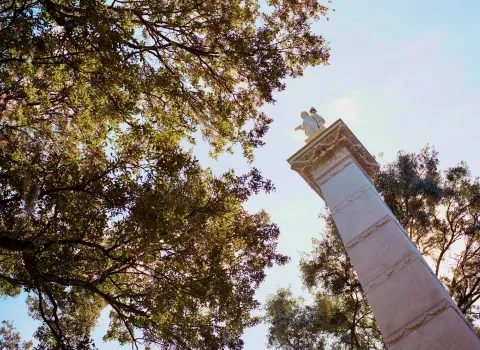
 0.5-1.0 hr stay
0.5-1.0 hr stay
Monterey Square (Free Entry)
11 W Gordon St, savannah
Monterey Square is a public park and historical landmark in Savannah. It was laid out in 1847 and named in honor of the 1846 Battle of Monterey during the Mexican-American War. The square is known for its beautiful fountain, which was added in 1989, and for its historic monuments and buildings. One of the most notable buildings on the square is the Mercer-Williams House, made famous in the book and movie "Midnight in the Garden of Good and Evil."
- 0.1 MILES
- 2 minutes
- Get Directions

- 6:00am
- 6:15am
- 6:30am
- 6:45am
- 7:00am
- 7:15am
- 7:30am
- 7:45am
- 8:00am
- 8:15am
- 8:30am
- 8:45am
- 9:00am
- 9:15am
- 9:30am
- 9:45am
- 10:00am
- 10:15am
- 10:30am
- 10:45am
- 11:00am
- 11:15am
- 11:30am
- 11:45am
- 12:00pm
- 12:15pm
- 12:30pm
- 12:45pm
- 1:00pm
- 1:15pm
- 1:30pm
- 1:45pm
- 2:00pm
- 2:15pm
- 2:30pm
- 2:45pm
- 3:00pm
- 3:15pm
- 3:30pm
- 3:45pm
- 4:00pm
- 4:15pm
- 4:30pm
- 4:45pm
- 5:00pm
- 5:15pm
- 5:30pm
- 5:45pm
- 6:00pm
- 6:15pm
- 6:30pm
- 6:45pm
- 7:00pm
- 7:15pm
- 7:30pm
- 7:45pm
- 8:00pm
- 8:15pm
- 8:30pm
- 8:45pm
- 9:00pm
- 9:15pm
- 9:30pm
- 9:45pm
- 10:00pm
- 10:15pm
- 10:30pm
- 10:45pm
- 11:00pm
- 11:15pm
- 11:30pm
- 11:45pm
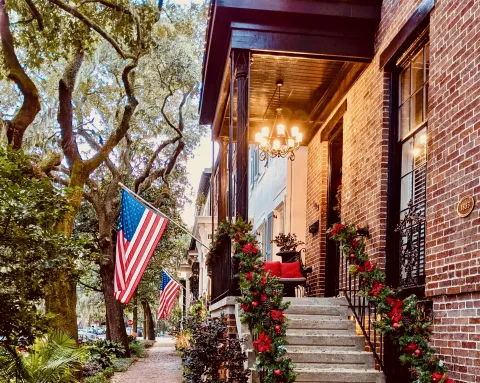
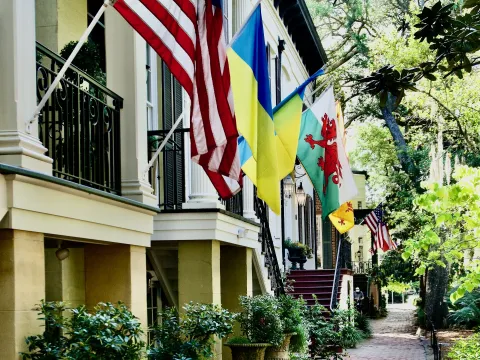
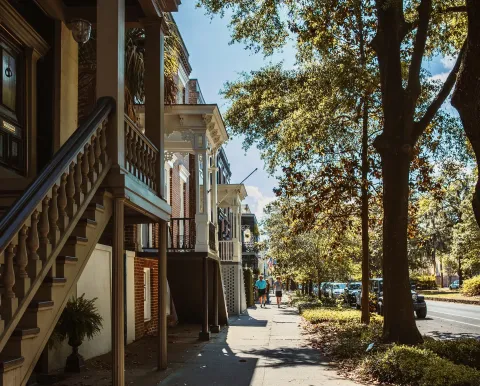
 0.5-1.0 hr stay
0.5-1.0 hr stay
Jones Street (Free Entry)
Jones St, savannah
Jones Street is a charming street located in the heart of Savannah's Historic District. It is known for its beautiful tree-lined sidewalks, historic architecture, and peaceful ambiance. This street is a must-see for anyone visiting Savannah, as it embodies the city's southern charm and rich history. Jones Street is also home to some of the city's most beautiful homes and gardens, many of which have been meticulously preserved for over 200 years. Jones Street was named after Major John Jones, a Revolutionary War hero who served under General George Washington. The street was originally built in the early 1800s and quickly became a popular residential area for Savannah's elite. Jones Street has received numerous awards and recognitions over the years, including being named one of the "Most Beautiful Streets in the USA" by Southern Living Magazine.
- 0.3 MILES
- 7 minutes
- Get Directions

- 6:00am
- 6:15am
- 6:30am
- 6:45am
- 7:00am
- 7:15am
- 7:30am
- 7:45am
- 8:00am
- 8:15am
- 8:30am
- 8:45am
- 9:00am
- 9:15am
- 9:30am
- 9:45am
- 10:00am
- 10:15am
- 10:30am
- 10:45am
- 11:00am
- 11:15am
- 11:30am
- 11:45am
- 12:00pm
- 12:15pm
- 12:30pm
- 12:45pm
- 1:00pm
- 1:15pm
- 1:30pm
- 1:45pm
- 2:00pm
- 2:15pm
- 2:30pm
- 2:45pm
- 3:00pm
- 3:15pm
- 3:30pm
- 3:45pm
- 4:00pm
- 4:15pm
- 4:30pm
- 4:45pm
- 5:00pm
- 5:15pm
- 5:30pm
- 5:45pm
- 6:00pm
- 6:15pm
- 6:30pm
- 6:45pm
- 7:00pm
- 7:15pm
- 7:30pm
- 7:45pm
- 8:00pm
- 8:15pm
- 8:30pm
- 8:45pm
- 9:00pm
- 9:15pm
- 9:30pm
- 9:45pm
- 10:00pm
- 10:15pm
- 10:30pm
- 10:45pm
- 11:00pm
- 11:15pm
- 11:30pm
- 11:45pm
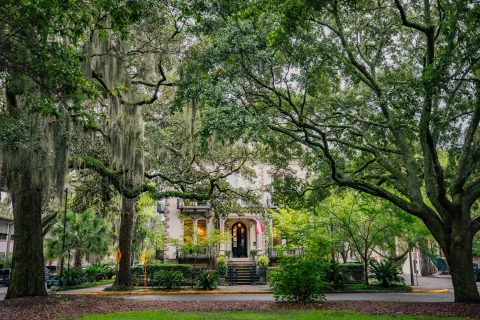


 1.0-3.0 hr stay
1.0-3.0 hr stay
Savannah Historic District (Free Entry)
301 Martin Luther King Jr Blvd, savannah
The Savannah Historic District is a collection of 22 squares lined with historic homes, churches, and museums. The district dates back to 1733 when General James Oglethorpe established the colony of Georgia. The district features a mix of architectural styles, including Federal, Georgian, and Greek Revival, and is famous for its distinctive ironwork balconies, cobbled streets, and moss-draped trees.

- 6:00am
- 6:15am
- 6:30am
- 6:45am
- 7:00am
- 7:15am
- 7:30am
- 7:45am
- 8:00am
- 8:15am
- 8:30am
- 8:45am
- 9:00am
- 9:15am
- 9:30am
- 9:45am
- 10:00am
- 10:15am
- 10:30am
- 10:45am
- 11:00am
- 11:15am
- 11:30am
- 11:45am
- 12:00pm
- 12:15pm
- 12:30pm
- 12:45pm
- 1:00pm
- 1:15pm
- 1:30pm
- 1:45pm
- 2:00pm
- 2:15pm
- 2:30pm
- 2:45pm
- 3:00pm
- 3:15pm
- 3:30pm
- 3:45pm
- 4:00pm
- 4:15pm
- 4:30pm
- 4:45pm
- 5:00pm
- 5:15pm
- 5:30pm
- 5:45pm
- 6:00pm
- 6:15pm
- 6:30pm
- 6:45pm
- 7:00pm
- 7:15pm
- 7:30pm
- 7:45pm
- 8:00pm
- 8:15pm
- 8:30pm
- 8:45pm
- 9:00pm
- 9:15pm
- 9:30pm
- 9:45pm
- 10:00pm
- 10:15pm
- 10:30pm
- 10:45pm
- 11:00pm
- 11:15pm
- 11:30pm
- 11:45pm